Ring Doorbell vs. Google Nest: 2025 Comparison Energy-Efficient Smart Homes Guide
29 Jun 2025
0 Comments
Ring Doorbell vs. Google Nest: 2025 Comparison & Energy-Efficient Smart Homes Guide
As smart home technology advances in 2025, video doorbells like Ring and Google Nest remain top choices for enhancing home security and convenience. With CES 2025 showcasing the latest innovations, this article provides a detailed Ring Doorbell vs. Google Nest Doorbell comparison for 2025, like “Ring vs Google Nest Doorbell 2025 review” and “best video doorbell CES 2025.” Additionally, we offer a comprehensive Energy-Efficient Smart Homes Guide, for “energy-efficient smart home guide 2025,” to help you create a sustainable and cost-effective smart home ecosystem.
Visit our YouTube channel for more updates & reviews: https://www.youtube.com/@SmartTechShopping
Ring Doorbell vs. Google Nest: 2025 Comparison
Video doorbells are a cornerstone of smart home security, offering real-time monitoring, two-way communication, and integration with other smart devices. Ring (owned by Amazon) and Google Nest are leading brands, each with unique strengths. Below, we compare the Ring Battery Doorbell Pro (2025) and Google Nest Doorbell (Battery, 2025 Edition) across key metrics, drawing from CES 2025 highlights, user feedback on social platforms, and recent web insights.
1. Video Quality and Field of View
-
Ring Battery Doorbell Pro (2025): Buy Now
-
Resolution: 1536p HD+ with HDR for crisp day and night visuals.
-
Field of View: 150° horizontal, 150° vertical (square view).
-
Features: Color night vision, Bird’s Eye View for motion tracking, and 3D Motion Detection for precise alerts.
-
User Feedback: Social media users praise the square field of view for capturing packages at the doorstep, ideal for “best Ring Doorbell video quality 2025.”
-
-
Google Nest Doorbell (Battery, 2025): Buy Now
-
Resolution: 1280x960 HD with 6x digital zoom.
-
Field of View: 145° diagonal, taller 3:4 aspect ratio.
-
Features: Enhanced night vision, AI-driven face and package detection with fewer false alerts.
-
User Feedback: Users highlight the Nest’s AI accuracy in distinguishing people from pets, perfect for “best Google Nest Doorbell AI features 2025.”
-
-
Verdict: Ring edges out with higher resolution and a wider field of view, but Nest excels in AI-driven alert accuracy.

2. Smart Features and Integration
-
Ring Battery Doorbell Pro (2025): Buy now
-
Ecosystem: Seamless integration with Amazon Alexa and Ring Home ecosystem (e.g., Echo Show for live feeds).
-
Smart Features: Alexa voice control, customizable motion zones, and integration with third-party devices via IFTTT and Matter.
-
New for 2025: 5G connectivity for faster streaming and low-latency alerts, showcased at CES 2025.
-
User Feedback: Users love the Alexa integration for voice-activated door monitoring, optimized for “Ring Doorbell Alexa integration 2025.”

-
-
Google Nest Doorbell (Battery, 2025): Buy Now
-
Ecosystem: Works with Google Home, Nest Hub, and Chromecast for live video streaming.
-
Smart Features: Google Assistant voice control, AI-powered Familiar Face recognition, and free 3-hour event video clips without a subscription.
-
New for 2025: Enhanced AI for package delivery notifications and Matter support for broader compatibility.
-
User Feedback: Users appreciate the free video clip storage and Google Home app simplicity, ideal for “Google Nest Doorbell smart features 2025.”
-
-
Verdict: Ring offers broader third-party integration, while Nest shines with free AI features and Google ecosystem compatibility.
3. Subscription Plans and Storage
-
Ring Battery Doorbell Pro (2025):
-
Subscription: Ring Home Standard ($4.99/month) or Premium ($10/month) for cloud storage, video review (180 days), and professional monitoring.
-
Free Features: Live streaming, motion alerts, and two-way talk without a subscription.
-
User Feedback: Users note the affordability of Ring’s plans for “best Ring Doorbell subscription 2025.”
-
-
Google Nest Doorbell (Battery, 2025):
-
Subscription: Nest Aware ($6/month) for 30-day event video history; Nest Aware Plus ($12/month) for 60-day history and 10-day 24/7 recording.
-
Free Features: 3-hour event video clips, motion alerts, and two-way talk.
-
User Feedback: Users value the free 3-hour clip storage but find Nest Aware pricier, relevant for “Google Nest Doorbell subscription cost 2025.”
-
-
Verdict: Ring’s plans are more affordable with longer video review periods, but Nest’s free 3-hour clips appeal to budget-conscious users.
4. Installation and Power Options
-
Ring Battery Doorbell Pro (2025):
-
Power: Rechargeable battery or hardwired for continuous power.
-
Installation: Tool-free battery installation or professional hardwiring; takes ~15 minutes.
-
User Feedback: Users appreciate the battery’s 6-month lifespan, optimized for “Ring Doorbell battery installation 2025.”
-
-
Google Nest Doorbell (Battery, 2025):
-
Power: Rechargeable battery or hardwired.
-
Installation: Battery setup is simple (~10 minutes); hardwiring requires professional help for some.
-
User Feedback: Users note the Nest’s sleek design but mention shorter battery life (~4 months), ideal for “Google Nest Doorbell installation guide 2025.”
-
-
Verdict: Both are easy to install, but Ring’s longer battery life gives it a slight edge.
5. Price and Value
-
Ring Battery Doorbell Pro (2025):
-
Price: ~$229.99 (varies with CES 2025 promotions).
-
Value: Affordable subscriptions, high-resolution video, and broad integration make it a strong value for “best value video doorbell 2025.”
-
-
Google Nest Doorbell (Battery, 2025):
-
Price: ~$179.99 (often discounted post-CES).
-
Value: Free AI features and 3-hour video clips offer great value for non-subscribers, perfect for “best budget smart doorbell 2025.”
-
-
Verdict: Nest is cheaper upfront, but Ring’s robust features and lower subscription costs provide better long-term value.
Final Recommendation
-
Choose Ring Battery Doorbell Pro (2025) if you’re in the Amazon ecosystem, prioritize high-resolution video, and want affordable subscriptions with professional monitoring. Ideal for “best Ring Doorbell for Alexa users 2025.”
-
Choose Google Nest Doorbell (Battery, 2025) if you use Google Home, value free AI features, and prefer a lower upfront cost. Perfect for “best Google Nest Doorbell for Google ecosystem 2025.”
Energy-Efficient Smart Homes Guide for 2025
Creating an energy-efficient smart home reduces utility bills, lowers your carbon footprint, and enhances comfort. With smart devices like video doorbells, thermostats, and lights showcased at CES 2025, this guide outlines actionable steps to build a sustainable smart home, “energy-efficient smart home guide 2025” and “how to create a sustainable smart home 2025.”
Why Energy Efficiency Matters in 2025
Smart homes can reduce energy consumption by up to 30% through automation and real-time monitoring. Social media users highlight devices like smart thermostats and LED lights as key to sustainability, aligning with global trends toward eco-friendly living. This guide focuses on practical, CES 2025-inspired solutions.
Step 1: Choose Energy-Efficient Smart Devices
-
Smart Thermostats:
-
Recommendation: Google Nest Learning Thermostat (4th Gen, 2025) or Samsung EcoSync (CES 2025). Buy now
-
Features: AI-driven temperature scheduling, 5G connectivity, and ENERGY STAR certification.
-
Benefit: Saves ~10-15% on heating/cooling costs annually.
-
User Feedback: Users praise the Nest’s sleek design and energy reports, ideal for “best smart thermostat for energy savings 2025.”

-
-
Smart Lights:
-
Features: LED bulbs, motion sensors, and scheduling via 5G for instant control.
-
Benefit: Reduces lighting energy use by up to 80% compared to incandescent bulbs.
-
User Feedback: Users love the Hue’s color customization and eco-friendly design, optimized for “energy-efficient smart lights 2025.”

-
Smart Plugs:
-
Recommendation: Amazon Smart Plug (2025 Edition). Buy now
-
Features: Remote control and energy usage tracking via Alexa.
-
Benefit: Cuts standby power for appliances like TVs or chargers.
-
User Feedback: Users note easy setup and cost savings, perfect for “best smart plug for energy efficiency 2025.”

-
Step 2: Optimize Your Smart Home Network
-
Use 5G or Wi-Fi 6E: Devices like the Ring and Nest Doorbells (2025) leverage 5G for faster, more reliable connections, reducing energy waste from network lag.
-
Central Hub: Invest in a smart hub (e.g., Google Nest Hub Pro or Amazon Echo Ultra) to streamline device communication, minimizing power draw.
-
User Feedback: Users highlight 5G’s role in reducing latency for “best 5G smart home devices 2025.”
Step 3: Automate Energy-Saving Routines
-
Scheduling: Use apps like Google Home or Ring Home to schedule lights, thermostats, and plugs based on occupancy.
-
Example: Set lights to dim at 10 PM or thermostat to lower when you’re away.
-
-
Geofencing: Enable location-based triggers (e.g., Nest Thermostat adjusts when you leave home).
-
Motion Sensors: Pair doorbells like Ring or Nest with motion-activated lights to illuminate only when needed.
-
User Feedback: Users share automation tips for “smart home automation for energy savings 2025.”
Step 4: Monitor and Analyze Energy Usage
-
Smart Energy Monitors:
-
Recommendation: Sense Energy Monitor or Emporia Vue (2025 models).
-
Features: Real-time tracking of appliance energy use via smartphone apps.
-
Benefit: Identifies high-energy devices for optimization.
-
-
Doorbell Integration: Both Ring and Nest Doorbells can trigger energy-saving routines (e.g., turning off lights after detecting a visitor).
-
User Feedback: Users value real-time insights for “best energy monitoring devices 2025.”
Step 5: Incorporate Renewable Energy
-
Solar Panels: Pair with smart devices like Nanoleaf Shapes Buy now for lighting that reacts to music.
-
Battery Storage: Use systems like Tesla Powerwall to store solar energy for nighttime use.
-
User Feedback: Solar-powered smart devices are trending for “sustainable smart home solutions 2025.”

Step 6: Maintain and Upgrade Regularly
-
Firmware Updates: Keep devices like Ring, Nest, and thermostats updated for optimal performance and energy efficiency.
-
Replace Old Appliances: Upgrade to ENERGY STAR-certified appliances to complement your smart home.
-
User Feedback: Users stress firmware updates for “how to maintain smart home devices 2025.”
Troubleshooting Energy Efficiency Issues
-
High Energy Use:
-
Check for outdated devices or poor Wi-Fi signals causing excessive power draw.
-
Use energy monitors to pinpoint culprits.
-
-
Device Connectivity:
-
Ensure 5G or Wi-Fi 6E routers are centrally placed to reduce signal strain.
-
Restart hubs or devices if lag occurs.
-
-
Search Term: “troubleshoot smart home energy efficiency 2025”
How Ring/Nest Doorbells Contribute to Energy Efficiency
Both doorbells enhance energy-efficient smart homes:
-
Ring Battery Doorbell Pro: Motion detection triggers lights only when needed, saving energy. Its battery option reduces wiring costs.
-
Google Nest Doorbell: AI-driven alerts minimize unnecessary notifications, reducing app and device power use. Free video clips lower cloud storage demands.
-
User Feedback: Users integrate doorbells with smart lights for “energy-efficient smart home security 2025.”
Final Thoughts
The Ring Battery Doorbell Pro (2025) and Google Nest Doorbell (Battery, 2025) are top-tier choices for smart home security, with Ring excelling in video quality and affordability, and Nest leading in AI features and Google integration. Choose based on your ecosystem and budget, optimized for “Ring vs Google Nest Doorbell comparison 2025.” Meanwhile, our Energy-Efficient Smart Homes Guide empowers you to create a sustainable home using CES 2025-inspired devices like smart thermostats, lights, and energy monitors, perfect for “how to build an energy-efficient smart home 2025.”
Stay tuned to social platforms for CES 2025 updates and smart home trends. Which doorbell or energy-saving device are you excited to try? Share below!





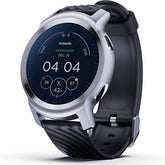
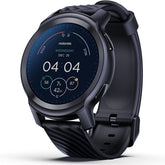



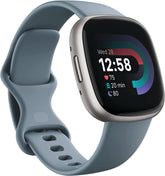


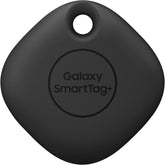
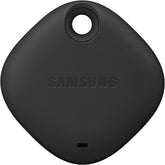



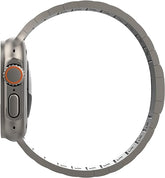
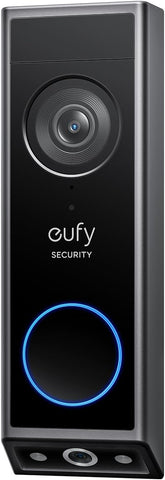

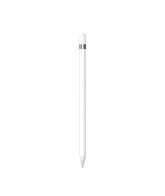

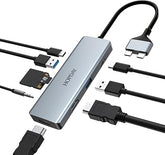

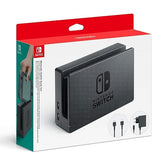
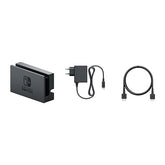
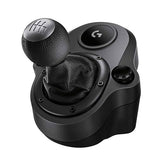
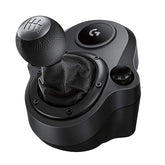




![["B0B1L87TMY"]](http://smarttechshopping.com/cdn/shop/products/7110BNil-dL._AC_SL1500_165x.jpg?v=1695449139)
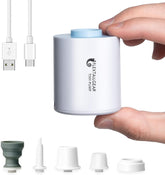
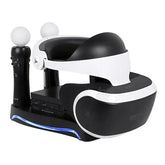





Leave a comment
Please note, comments need to be approved before they are published.